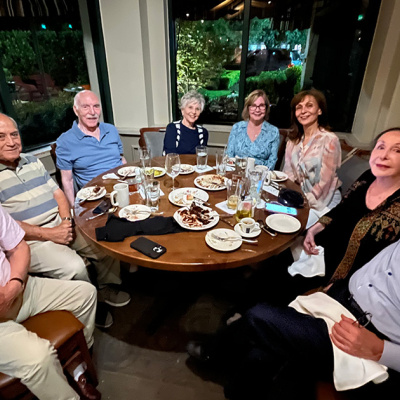UT-Led CISTAR Aims to Turn Natural Gas into Transportation Fuels
Sitting in her office sandwiched between new state-of-the-art research labs at the Engineering Education and Research Center, chemical engineering professor Joan Brennecke, BS ’84, is gearing up for something big—she’s about to become the co-leader of a five-year, $20 million National Science Foundation flagship research center.
In September, UT announced its role in leading The Center for Innovative and Strategic Transformation of Alkane Resources (abbreviated CISTAR and pronounced “sea-star”) which aims to develop new technologies that will convert natural gas into transportation fuels. Brennecke was tapped to lead CISTAR along with Fabio Ribeiro, who is the R. Norris and Eleanor Shreve Professor of Chemical Engineering of Purdue University.
Brennecke joined the Department of Chemical Engineering this year as part of Gov. Greg Abbott’s Governor’s University Research Initiative, which brings the best and brightest researchers to the Texas educational system. Chemical engineering professors David Allen, Thomas Edgar, Benny Freeman, and Mark Stadtherr and LBJ School professor Sheila Olmstead will are also part of the UT team. Along with UT and Tulane, CISTAR research will occur at Northwestern University, the University of New Mexico, and the University of Notre Dame. At UT, research will focus on creating materials, technologies, and processes that could facilitate the conversion of natural gas to fuel, minimizing environmental footprints, and performing system analyses.
In the past decade, new extraction technologies and the natural gas revolution have transformed America’s energy landscape. CISTAR plans to leverage the shale gas abundance by supplying natural gas well sites in rural parts of the U.S. with small, modular, and mobile processing units.
“What we’re trying to do is better utilize the light hydrocarbon resources that come with shale gas," Brennecke says. "We have this resource that’s underutilized and the whole idea of CISTAR is that we want to take those resources and turn them into something we really need—liquid fuel." CISTAR aims to develop technologies that convert alkanes—light hydrocarbons such as methane or propane—into more valuable liquid fuels, like gasoline.
“We have a growing overabundance of these light hydrocarbons and we need to find ways of utilizing them. Making them into liquid transportation fuels is one way,” Allen says. “We haven’t really talked about making distributed systems for chemicals or fuel and that’s really what CISTAR will be focused around.”
Brennecke and Allen note that the project is critical for the country in more ways than one. These technologies could boost local economies around the U.S., create jobs, revive industries, and inject billions into the nation’s economy. The project could revitalize the petrochemical and fuels industries and increase the country’s resiliency by reducing current dependencies on the long-haul transport of these gases and the usage of large refineries in the Gulf that have been vulnerable to extreme weather.
Research breakthroughs at the hands of CISTAR could be revolutionary, allowing the U.S. to lower the price tag of fuel over the next century and hasten the transition to energy independence and an economy less reliant on fossil fuels. It could also enable other countries to access untapped shale reserves. A promotional video on CISTAR’s website touts that it would permit sustainable development of America’s light hydrocarbon resources, bringing environmental benefits as the country transitions to renewable energy and uses natural gas as a “bridge fuel.”
“We fully anticipate that within five years we will be making some liquid fuels out of those light hydrocarbon resources, demonstrating that this can work, and that we’ll be starting to license this technology to companies,” Brennecke said. CISTAR has partnered with about a dozen companies that will scale and commercialize the technologies if they are developed.
Newly minted CISTAR research labs envelop Brennecke’s office. For now, they don’t have any signage indicating what they contain, and construction work still rings loudly throughout the hallway. That will change in a matter of weeks, though, and considering the excitement of working to develop such a potentially transformative technology, it doesn't seem like the team is very bothered.






